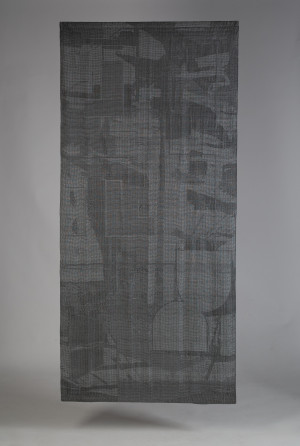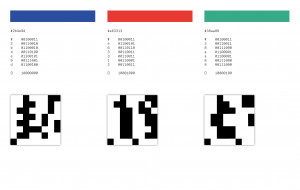In weaving, fabric and its technical production form a unity: web structure, pattern, and representation cannot be separated from each other. The artwork "binary colors" addresses this aspect and further examines the relationship between binary code and weaving notation. In both cases, black and white squares are used to encode and convey information. A Jacquard loom is used for the fabrication of the fabric, as it allows precise web structures to be defined for each color.
Starting from a three-color composition, a linear translation process is initiated. First, the colors are converted into hexadecimal code, then into binary code, and finally into a sequence of black and white squares.
The resulting black and white compositions are then used as web structures for the respective colors. From the originally three-color composition, a grayscale fabric is created. Upon closer examination, it is possible to decipher the fabric, and the various encoding steps remain traceable.
"Binary Colors" concretely demonstrates how the production process is prominently manifested in the fabric. It also highlights the close relationship between weaving (Latin: "textere") and writing.
200 x 100 cm, woven on a digital Jacquard loom, AFAD Bratislava / 2023





